Seungkwon Kim
VisAgent: Narrative-Preserving Story Visualization Framework
Mar 04, 2025Abstract:Story visualization is the transformation of narrative elements into image sequences. While existing research has primarily focused on visual contextual coherence, the deeper narrative essence of stories often remains overlooked. This limitation hinders the practical application of these approaches, as generated images frequently fail to capture the intended meaning and nuances of the narrative fully. To address these challenges, we propose VisAgent, a training-free multi-agent framework designed to comprehend and visualize pivotal scenes within a given story. By considering story distillation, semantic consistency, and contextual coherence, VisAgent employs an agentic workflow. In this workflow, multiple specialized agents collaborate to: (i) refine layered prompts based on the narrative structure and (ii) seamlessly integrate \gt{generated} elements, including refined prompts, scene elements, and subject placement, into the final image. The empirically validated effectiveness confirms the framework's suitability for practical story visualization applications.
A Framework for Portrait Stylization with Skin-Tone Awareness and Nudity Identification
Mar 21, 2024
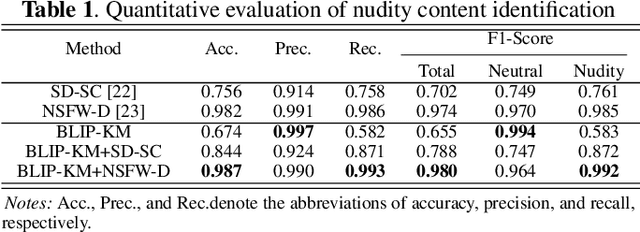
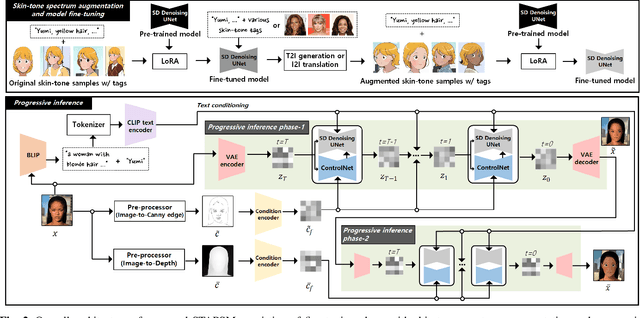

Abstract:Portrait stylization is a challenging task involving the transformation of an input portrait image into a specific style while preserving its inherent characteristics. The recent introduction of Stable Diffusion (SD) has significantly improved the quality of outcomes in this field. However, a practical stylization framework that can effectively filter harmful input content and preserve the distinct characteristics of an input, such as skin-tone, while maintaining the quality of stylization remains lacking. These challenges have hindered the wide deployment of such a framework. To address these issues, this study proposes a portrait stylization framework that incorporates a nudity content identification module (NCIM) and a skin-tone-aware portrait stylization module (STAPSM). In experiments, NCIM showed good performance in enhancing explicit content filtering, and STAPSM accurately represented a diverse range of skin tones. Our proposed framework has been successfully deployed in practice, and it has effectively satisfied critical requirements of real-world applications.
Interactive Cartoonization with Controllable Perceptual Factors
Dec 19, 2022Abstract:Cartoonization is a task that renders natural photos into cartoon styles. Previous deep cartoonization methods only have focused on end-to-end translation, which may hinder editability. Instead, we propose a novel solution with editing features of texture and color based on the cartoon creation process. To do that, we design a model architecture to have separate decoders, texture and color, to decouple these attributes. In the texture decoder, we propose a texture controller, which enables a user to control stroke style and abstraction to generate diverse cartoon textures. We also introduce an HSV color augmentation to induce the networks to generate diverse and controllable color translation. To the best of our knowledge, our work is the first deep approach to control the cartoonization at inference while showing profound quality improvement over to baselines.
WebtoonMe: A Data-Centric Approach for Full-Body Portrait Stylization
Oct 19, 2022



Abstract:Full-body portrait stylization, which aims to translate portrait photography into a cartoon style, has drawn attention recently. However, most methods have focused only on converting face regions, restraining the feasibility of use in real-world applications. A recently proposed two-stage method expands the rendering area to full bodies, but the outputs are less plausible and fail to achieve quality robustness of non-face regions. Furthermore, they cannot reflect diverse skin tones. In this study, we propose a data-centric solution to build a production-level full-body portrait stylization system. Based on the two-stage scheme, we construct a novel and advanced dataset preparation paradigm that can effectively resolve the aforementioned problems. Experiments reveal that with our pipeline, high-quality portrait stylization can be achieved without additional losses or architectural changes.
Cross-Domain Style Mixing for Face Cartoonization
May 25, 2022
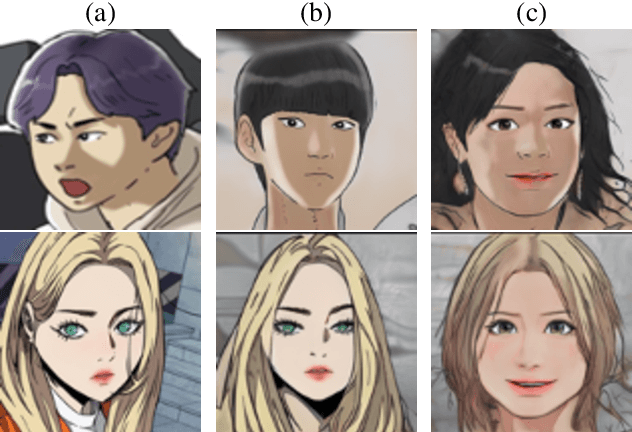
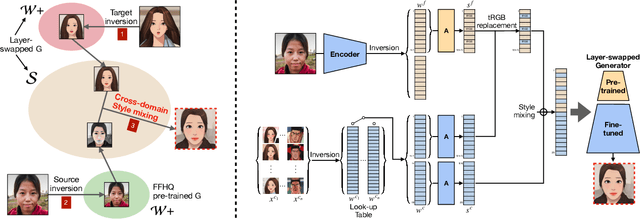
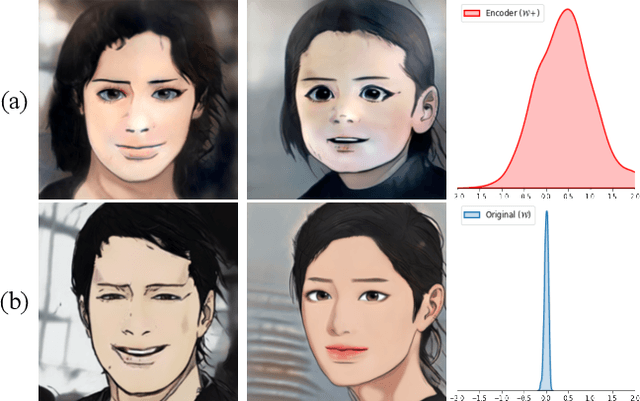
Abstract:Cartoon domain has recently gained increasing popularity. Previous studies have attempted quality portrait stylization into the cartoon domain; however, this poses a great challenge since they have not properly addressed the critical constraints, such as requiring a large number of training images or the lack of support for abstract cartoon faces. Recently, a layer swapping method has been used for stylization requiring only a limited number of training images; however, its use cases are still narrow as it inherits the remaining issues. In this paper, we propose a novel method called Cross-domain Style mixing, which combines two latent codes from two different domains. Our method effectively stylizes faces into multiple cartoon characters at various face abstraction levels using only a single generator without even using a large number of training images.
 Add to Chrome
Add to Chrome Add to Firefox
Add to Firefox Add to Edge
Add to Edge